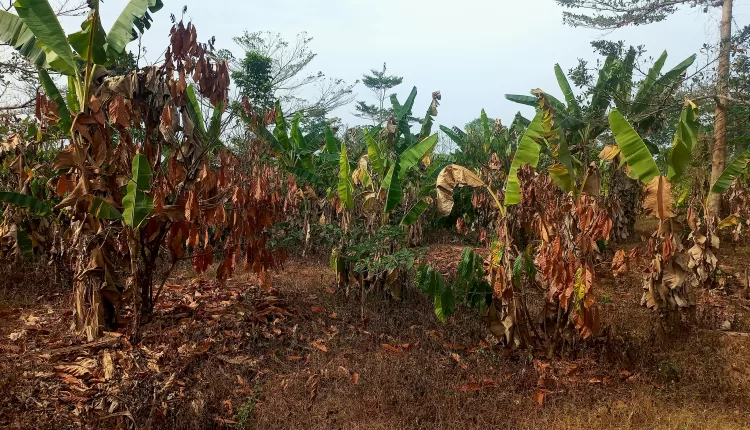Farmers Kick Against Handover of Rehabilitated Cocoa Farms
...threaten to abandon cocoa farms if forced to take over
Several beneficiaries of Ghana’s cocoa rehabilitation programme have kicked against a planned handover of rehabilitated cocoa farms to them.
Last month, Ghana Cocoa Board (COCOBOD) announced its intention to officially hand over thousands of rehabilitated cocoa farms to beneficiary farmers, effective March 2024.
Official COCOBOD data available to Cocoa Post indicates that a total of 61,656 farms covering an area of 67,385.43 hectares have successfully been rehabilitated as of January 2024.
According to the data, some 19,627 rehabilitated cocoa farms covering an area of 18,110.94 hectares have been certified and are ready to be handed over to their respective beneficiaries.
But reacting to Cocobod’s intended plan, some beneficiary cocoa farmers in the Western North Region have vehemently protested the handover.
“My farm is not fully rehabilitated yet. The majority of the cocoa seedlings planted in 2018 died and have only recently been replanted,” said Nana Ayettey Daniel, a cocoa farmer at Abuoso in the Dadieso Cocoa District.
Ayettey insisted, “The farm is not yet ready for handing over,” warning that, “If they insist on handing it over, I will have no option than to abandon it.”
He explained that he lacks the financial resources to maintain the newly replanted 5-acre cocoa farm, which may not be productive until 2 or 3 years.
According to the cocoa rehabilitation standard operating procedure (SOP) by the Cocoa Health and Extension Division (CHED) of COCOBOD, rehab farms need to receive five rounds of maintenance weeding per year, which activity ought to be carried out every other month.
However, the farm maintenance activity is capital-intensive and involves hiring the appropriate labour to weed through the farm at designated periods in the year.
“The government should handle that as originally planned and hand it over when the trees are mature,” he advised.
At New Jinijini, also in the Dadieso Cocoa District of the Western North Region, another cocoa rehabilitation farmer, Tetteh Michael, shared similar sentiments.
He told Cocoa Post that although rehabilitation work on his cocoa farm started in 2018, work was abandoned for a couple of years until a new contractor took over quite recently.
Tetteh said he was surprised when “CHED officers informed me that my 127-acre newly rehabilitated farm has been earmarked for handing over.”
His concern, like many others, stems from the reality that after the handover, the Cocobod-sponsored routine farm maintenance or weeding regime implemented under the cocoa rehabilitation programme will be discontinued.
“That’s a big problem because I just inherited this 127-acre cocoa farm from my late father. I don’t have the financial muscle to hire labour to continue with the farm maintenance,” he lamented.
“Honestly, if they forcibly hand it over, I will be compelled to abandon the farm,” which means all the investment committed to the rehabilitation programme so far would go down the drain.
Tetteh also complained of a low cocoa seedling survival rate in rehabilitated farms in areas like Kefas 3, Fawohoboyesu, New Brekum, and Nana Yeboah, all cocoa farming communities in the district.
Again, per CHED’s cocoa rehab SOPs, every hectare of rehabilitated farm established must have 1100 cocoa seedlings and an equal number of plantain seedlings, along with some permanent shade trees.
“I can confidently say that my cocoa farm has a cocoa seedling survival rate of about 35–40%,” while a majority of his juvenile cocoa trees have succumbed to the harsh Harmattan dryness.
David Amuzu, whose 3.5-hectare cocoa farm under rehabilitation has been identified for handover, believes Cocobod is serving the beneficiary cocoa farmers a raw deal.
“We were made to understand that the cocoa rehabilitation programme is for 2 years. Firstly, my farm is not up to 3 years old, and secondly, it’s not well established,” Amuzu bemoaned.
His cocoa farm, located at New Jinijini, is said to be reeling under the dry harmattan spell, leading to a massive loss of cocoa seedlings.
“They are only now being replaced with new seedlings; if they hand it over now, it’s going to be a big challenge for me,” he stated.
Amuzu pleaded, “Cocobod must reconsider its decision and only hand the farms over when they are mature enough.”
Ghana faces the worst decline in cocoa production in a generation and hopes to bounce back with the ongoing National Cocoa Rehabilitation Programme, among other productivity enhancement programmes.
Initiated in 2018 on a pilot basis, it was expanded in 2020 as a national programme backed by a $230 million African Development Bank loan facility.
The programme scope covered the rehabilitation of a targeted area of 156,400 hectares of moribund and Cocoa Swollen Shoot Disease outbreak farms by cutting out, replanting, and maintaining the farm for 3 years before handing it over to beneficiaries.
Beneficiary cocoa farmers and land owners are each compensated GHS1000 for every hectare released to Cocobod for rehabilitation.
Bogged down in a rather slow pace of implementation, the Ghanaian farm service and forest restoration firm, Afarinick Company Limited, was contracted in 2022 to help speed up programme delivery.
Afarinick operates a 50-million-capacity nursery specialising in the production of planting materials like plantain and other crop seedlings and boasts a field staff of over thirty-two thousand (32000), most of whom are cocoa farmers.
- Illegal Mining Threatening Ghana’s $230M Cocoa Rehabilitation - April 10, 2024
- Ghana Raises Cocoa Farmgate Price by 58.26% to GHC2,070 per bag - April 5, 2024
- New Standard for Measuring Cocoa Household Income Launched - April 5, 2024
